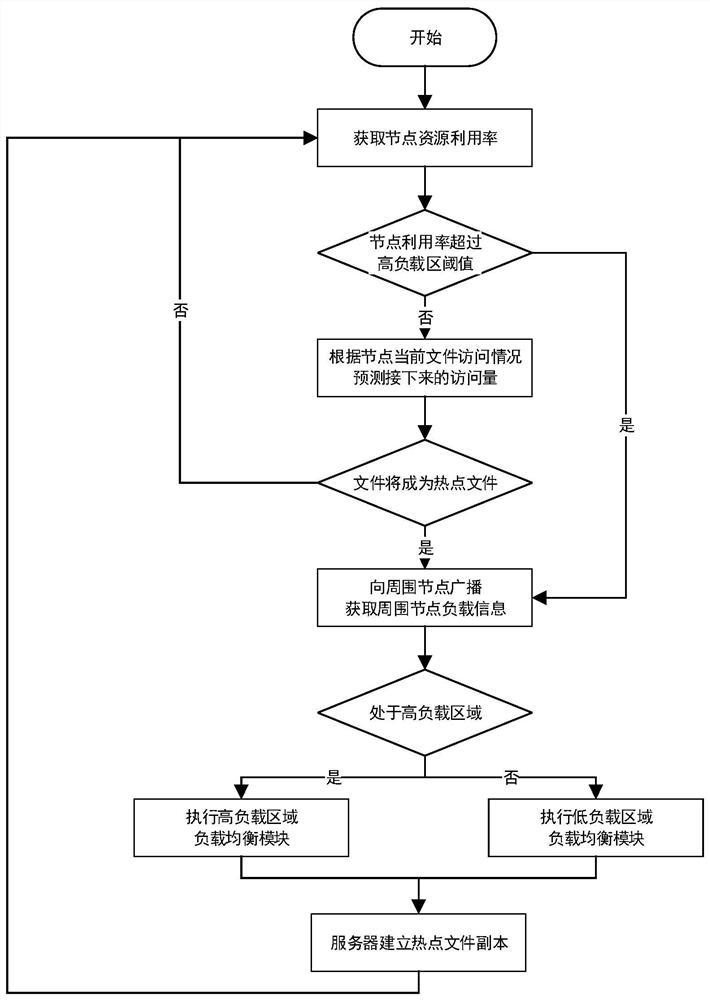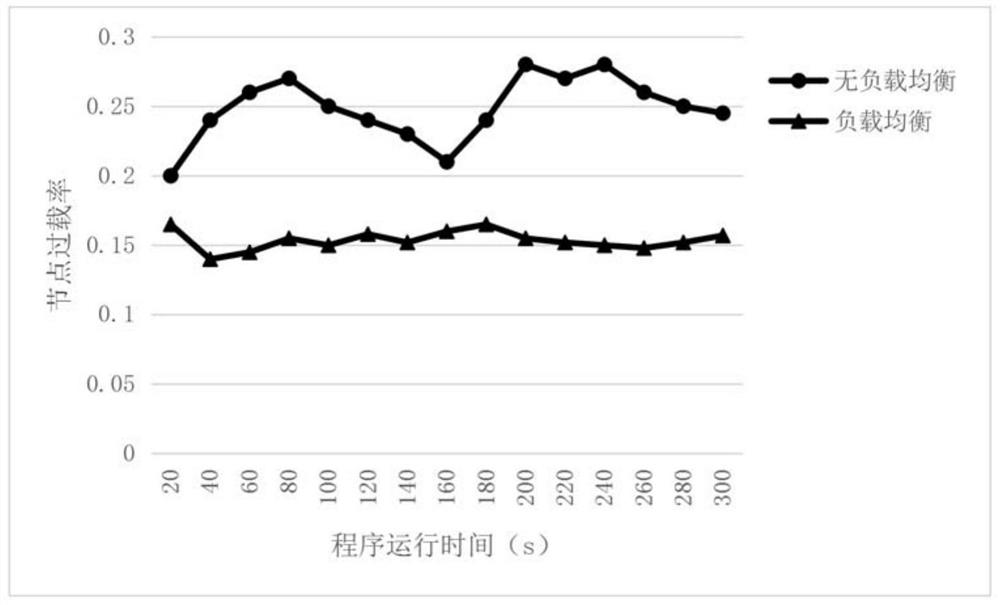A P2P Network Dynamic Load Balancing Method Based on Prediction and Region Division
A technology of P2P network and dynamic load, which is applied in the direction of data exchange network, digital transmission system, electrical components, etc., can solve the problem of no balance, and achieve the effect of reducing the ratio, reducing the ratio, and obviously gaining
- Summary
- Abstract
- Description
- Claims
- Application Information
AI Technical Summary
Problems solved by technology
Method used
Image
Examples
specific Embodiment approach 1
[0049] A P2P network dynamic load balancing method based on prediction and area division, such as figure 1 shown, including the following steps:
[0050] Step a, obtain node resource utilization;
[0051] Step b, judging whether the resource utilization of the node exceeds the threshold of the high-load area, if yes, execute step e, if not, execute step c;
[0052] Step c, predicting the next access volume according to the current file access situation of the node;
[0053] Step d, determine whether the file becomes a hot file, if so, execute step e, if not, execute step a;
[0054] Step e, broadcast to the surrounding nodes to obtain the load information of the surrounding nodes
[0055] Step f, judging whether it is in a high-load area, if so, execute the load-balancing module in the high-load area, if not, execute the load-balancing module in the low-load area;
[0056] Step g, the server creates a copy of the hotspot file, and proceeds to step a.
[0057] Such as figur...
specific Embodiment approach 2
[0078] When combining the triple exponential smoothing algorithm with the structured P2P network to predict hot files, each node needs to perform its own file heat calculation. The node periodically records the requested access status of the files in the current interval, and after recording, it is handed over to the algorithm for analysis. The current request result is above the threshold When , calculate the predicted value x of the hotspot file t+T , if the predicted value x t+T If it is greater than the hotspot file threshold Ψ (the threshold of the high-load area is different from the threshold of the low-load area, which is collectively denoted by Ψ), this node requests the load information of the surrounding nodes.
[0079] On the basis of the specific implementation mode 1, when the utilization rate of the node resource exceeds the threshold value of the high-load area, a local load balancing information collection method is adopted, including the following steps: ...
specific Embodiment approach 3
[0085] When a node enters a high-load state, that is, when the node utilization rate is higher than the threshold of the high-load area, the high-load node broadcasts K-hop routing information to the surrounding network, requests the load status of the surrounding nodes, and calculates whether the node is in the high-load area. When the surrounding nodes receive the load request information, the node detects the node utilization rate of its own node. If the node is in a low load state, that is, when the node utilization rate is less than the threshold of the high load area, the node returns the basic information of the node to the state requester, and returns A timestamp is used to calculate the link delay, and at the same time, the routing hop count K is reduced by one, and the request is broadcast to its surrounding nodes; if the node is in a high-load state, it only forwards the message after processing the routing hop count, and does not reply to the message.
[0086] On th...
PUM
 Login to View More
Login to View More Abstract
Description
Claims
Application Information
 Login to View More
Login to View More - R&D
- Intellectual Property
- Life Sciences
- Materials
- Tech Scout
- Unparalleled Data Quality
- Higher Quality Content
- 60% Fewer Hallucinations
Browse by: Latest US Patents, China's latest patents, Technical Efficacy Thesaurus, Application Domain, Technology Topic, Popular Technical Reports.
© 2025 PatSnap. All rights reserved.Legal|Privacy policy|Modern Slavery Act Transparency Statement|Sitemap|About US| Contact US: help@patsnap.com



